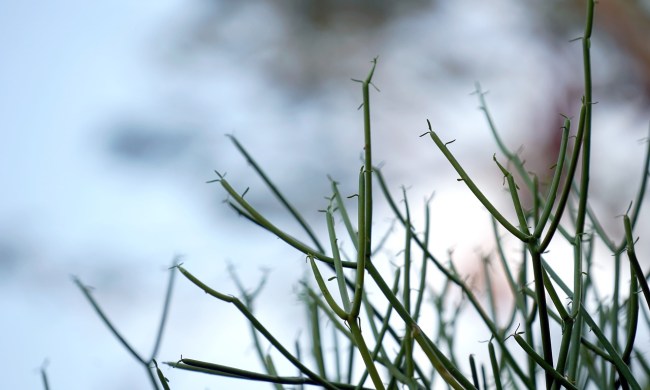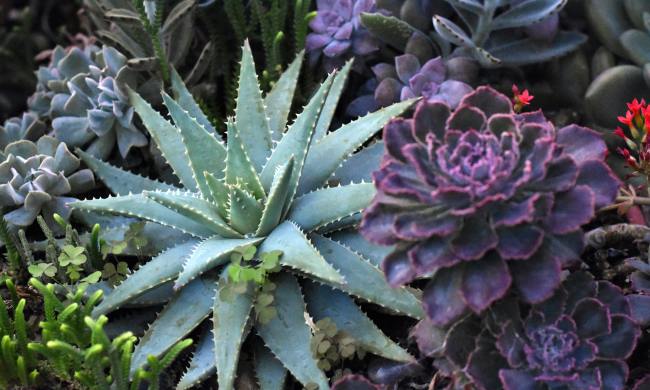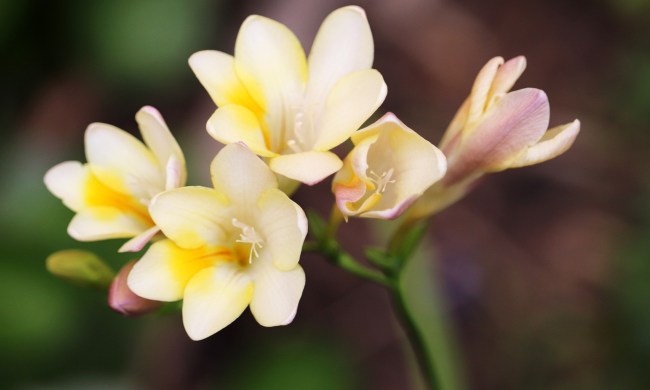Nothing makes a landscape feel warm and tropical like a palm tree. These easy-care trees and shrubs look great in landscaping and grow well as container plants on the patio or deck. If you’re thinking about planting a palm tree, you’ll need a bit of knowledge to keep it growing well and looking good. Read on to learn more about palm tree maintenance.

Types of palm trees
With more than 2,500 palm tree species growing worldwide, they’ve adapted to a wide range of growing conditions. Palm trees are native to both arid and wet regions. Some grow in full sun, others in shade. Some stay small, while others grow more than 50 feet tall. Before selecting one for your yard or pool deck, be sure it’s going to be able to live there. The following is a small sampling of some of the popular palm trees that Americans like to grow.
Palm trees for landscaping
- European fan palm, Chamaerops humilis
- Hardiness zones: 8 to 11
- Size: 13 feet tall, 8 feet wide
- Baby queen palm, Chamaedorea plumosa
- Hardiness zones: 9 to 11
- Size: 14 feet tall, 4 feet wide
- Pindo palm, Butia capitata
- Hardiness zones: 8 to 10
- Size: 18 feet tall, 12 feet wide
- Pygmy date palm, Phoenix roebelenii
- Hardiness zones: 10 to 11
- Size: 6 feet tall, 5 feet wide
Palm trees for outdoor containers
- Silver saw palmetto, Serenoa repens
- Hardiness zones: 8 to 11
- Size: 6 feet tall, 5 feet wide
- Chinese fan palm, Livistona chinensis
- Hardiness zones: 9 to 11
- Size: 30 feet tall, 12 feet wide
- Lipstick palm, Cyrtostachys renda
- Hardiness zones: 11 to 12
- Size: 25 feet tall, 12 feet wide
Palm trees to grow indoors
- Areca palm, Dypsis lutescens
- Hardiness zones: 10 to 11
- Size: 20 feet tall, 10 feet wide
- Parlor palm, Chamaedorea elegans
- Hardiness zones: 10 to 12
- Size: 6 feet tall, 3 feet wide
- Kentia palm, Howea forsteriana
- Hardiness zones: 9 to 11
- Size: 30 feet tall, 10 feet wide
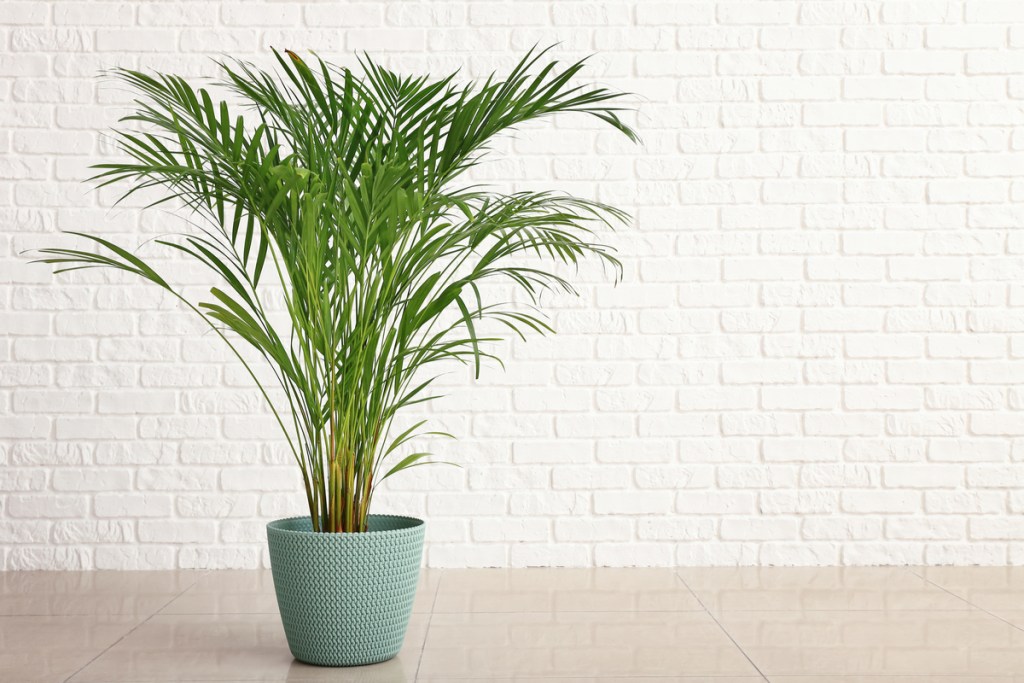
Palm tree growing requirements
Palm trees grow best in conditions that resemble those of their native range. Consider your climate, soil, and moisture conditions, as well as available sunlight before making a selection.
Climate
Palm trees come from tropical or semi-tropical climates where freezing temperatures are extremely rare. Gardeners in warm regions, USDA hardiness zone 9 and higher, can choose from a diverse assortment of native and exotic palm trees for landscaping or outdoor containers. A few palm species can withstand winters as far north as zone 7. In cooler climates, select palms to grow indoors year round, or outdoors during warm weather only.
Light
Some palms require full sun exposure for at least six hours per day. Others grow best in dappled shade and suffer in excessive sunlight. A few tolerate a wide range of light conditions. Be sure to choose a palm tree that will grow in the conditions your landscape or home has to offer.
Soil
Many palm tree species grow just fine in either acidic or alkaline soils. They all require well-drained soil. Those planted in containers thrive in high quality, all-purpose potting soil. Avoid planting palms in low-lying areas where water pools after rain. Amend heavy clay soil with a liberal amount of soil conditioner before planting.
Moisture
Palm trees from arid regions, such as the Mexican blue palm, Pindo palm, and Triangle palm, need little supplemental irrigation. Some of these types can make excellent container plants.
Water-loving palms, like the Ruffled Fan palm, Everglades palm, or Sabal palm, may need to be watered daily. These could be good choices for wet locations and heavier soils.
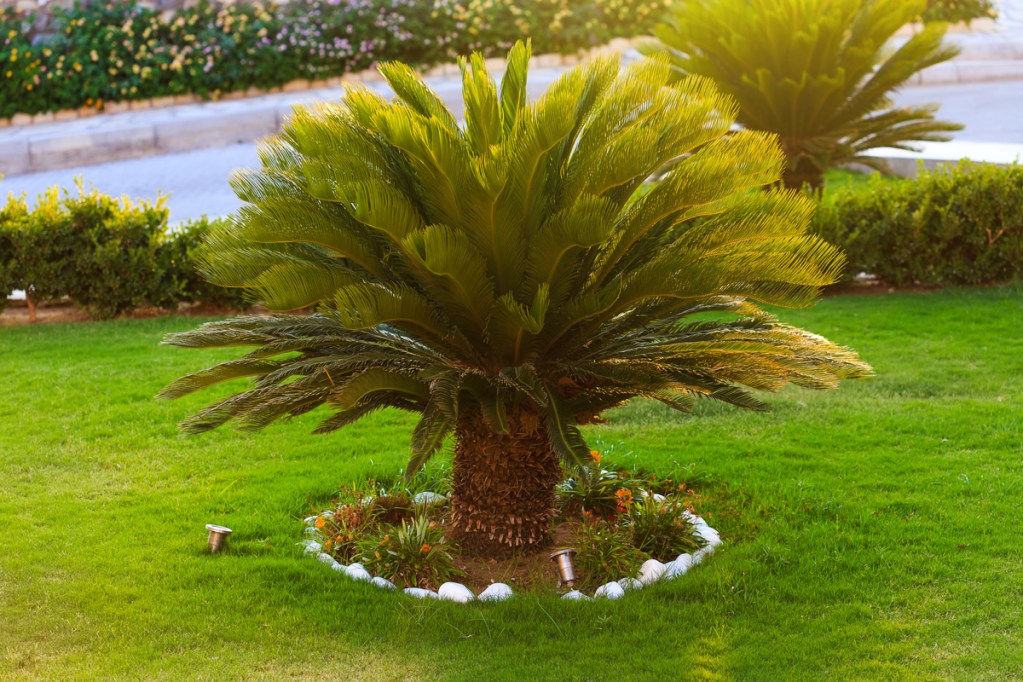
How to plant a palm tree
Once you’ve selected a palm tree, it’s time to plant. Follow these guidelines to get your tree growing.
Timing
Plant palm trees in the late spring or early summer at the beginning of the main growing season. Doing so gives them the maximum amount of time to establish an extensive root system before winter dormancy, and helps to prevent cold damage.
Planting
Dig the planting hole two to three times the width of the tree’s root ball, and no deeper than the height of the root ball. If the soil is composed of heavy clay, make it three-fourths of the root ball’s height. Mix the soil from the hole with soil conditioner at a 1:1 ratio.
Carefully remove the tree from its container without damaging the heart. It may be easier to cut the container off the root ball. Gently loosen any tightly wrapped roots. Place the tree in the hole and confirm that it’s at the proper depth before backfilling with the soil mixture.
Build a low soil berm around the outside of the planting hole to help direct water toward the root zone. Finish off with a three inch layer of mulch.
Bracing
Tall, top-heavy palm trees may be susceptible to blowing over in strong winds. Smooth palm trunks don’t lend themselves to conventional tree staking, but you can support them with bracing.
- About four feet from the ground, wrap the trunk with three layers of 16-inch wide burlap.
- Use twine to attach four 12-inch slats of 2×4 lumber, vertically and evenly spaced, around the protected area of the trunk.
- Drive four wooden anchor stakes two to three feet into the ground, aligned with the positions of the four vertical slats, four feet from the base of the tree.
- Measure from anchor stakes to the vertical slats and cut four 2x4s to length for the braces.
- Place the bottom of the brace against the inside of the stake and the top of the brace against the vertical slat. Nail the braces to the stakes. Secure the braces to the slats with wire and then (carefully) nail the brace to the upper slat without nailing into the tree.
- Remove bracing after the first full year.
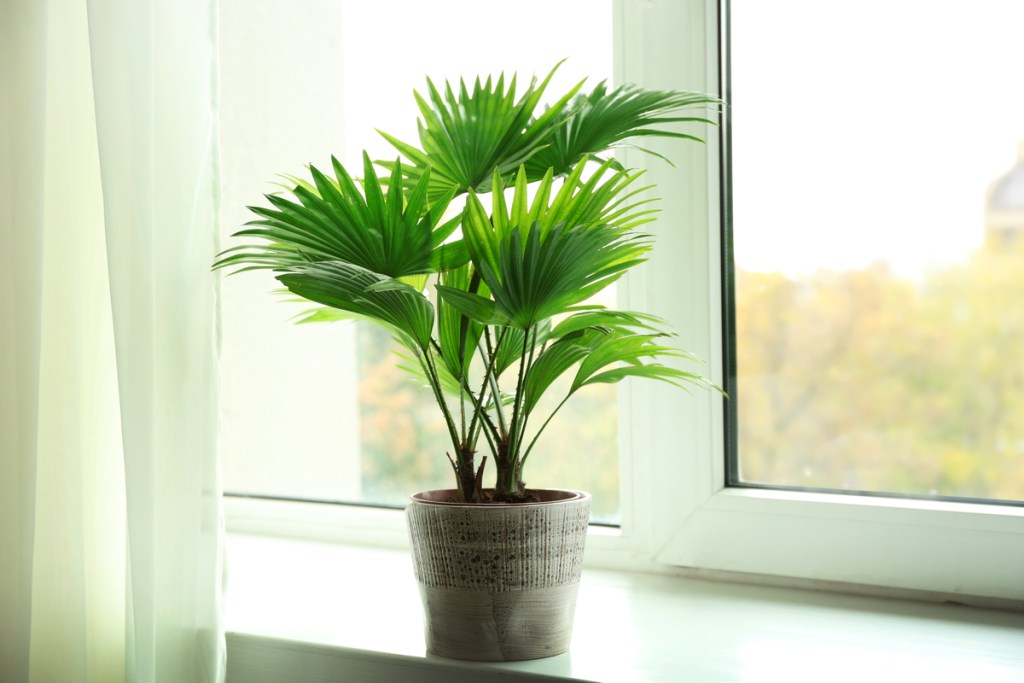
Palm tree care and maintenance
Once they’re in the ground, taking care of palm trees is pretty easy. With occasional feeding, watering, and pruning, they’ll thrive.
Water
Water daily for the first week or two after planting, then check the soil moisture three times per week. In rainy weather, supplemental watering is unnecessary. During hot, dry weather, daily watering may be required for palm trees in outdoor containers.
Fertilization
When palms aren’t properly nourished, they indicate their stress with discolored lower leaves. Prevent this with a good fertility program. Feed palm trees with 8-0-12, plus 4 percent magnesium palm fertilizer in early spring and early summer for consistently beautiful foliage. Don’t apply turfgrass fertilizer within 15 feet of palm trees, as the excess nitrogen will stress the tree.
Pruning
As palm trees grow, the lower fronds die back. To keep the tree looking its best and to eliminate hiding places for pests, prune the tree once or twice a year. Don’t remove foliage that hasn’t turned completely brown. Use pruning shears or a pruning saw to remove dead and damaged fronds, flowers, and fruit. On younger trees, leave at least two inches of the greenery on the trunk.
Cold weather protection
In the landscape, plant only palms that are hardy for your climate. In the event of an abnormal cold snap, protect these palm trees with an extra layer of mulch and cover the foliage with a frost blanket.
Outdoor container plants can be moved to a protected area, away from prevailing winds. A sheltered site along a south or southeast facing wall can provide some radiant heat as well as protection from wind. Potted palm trees can be wrapped with insulating material or placed on top of heating mats for added protection.

